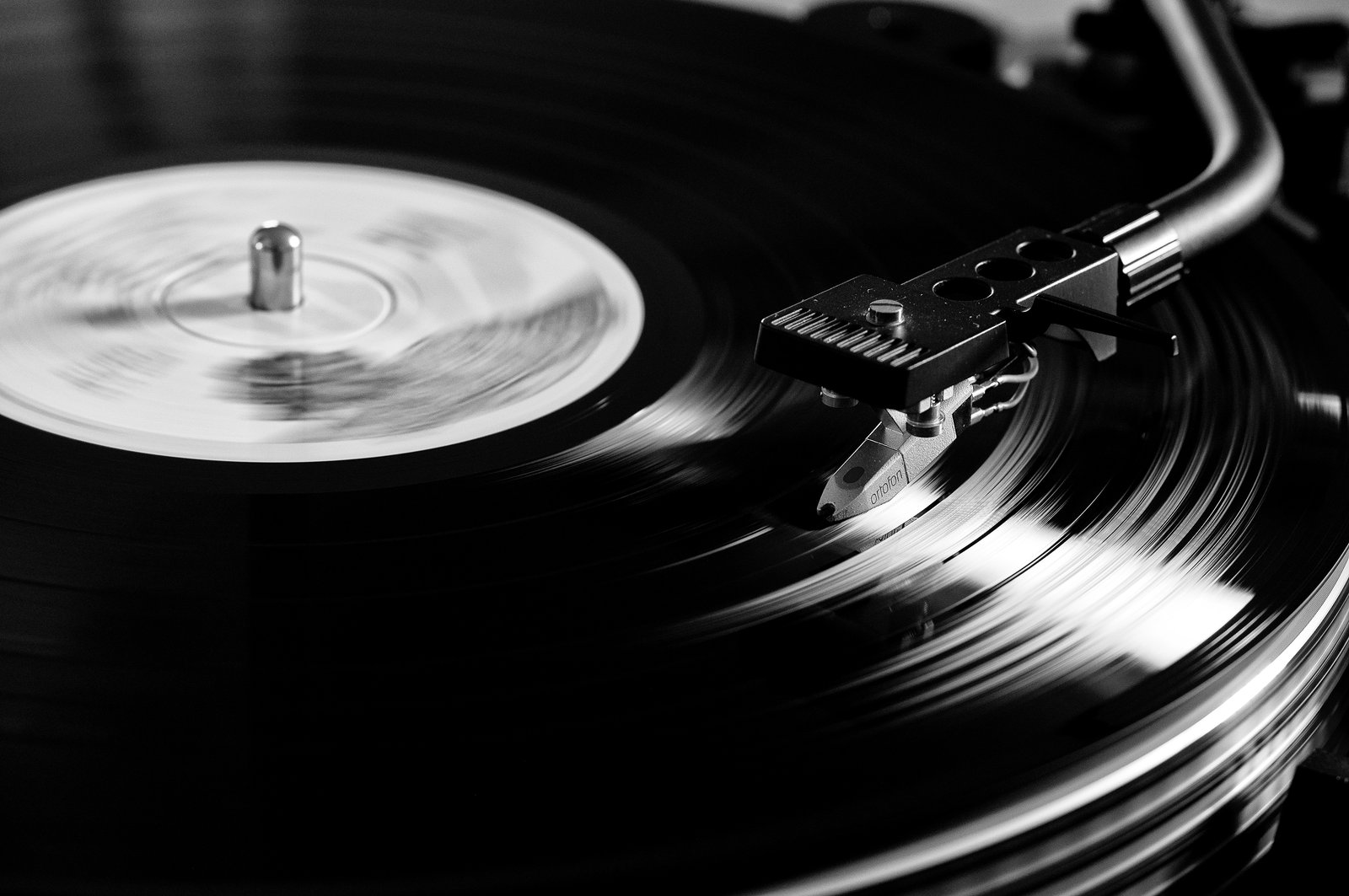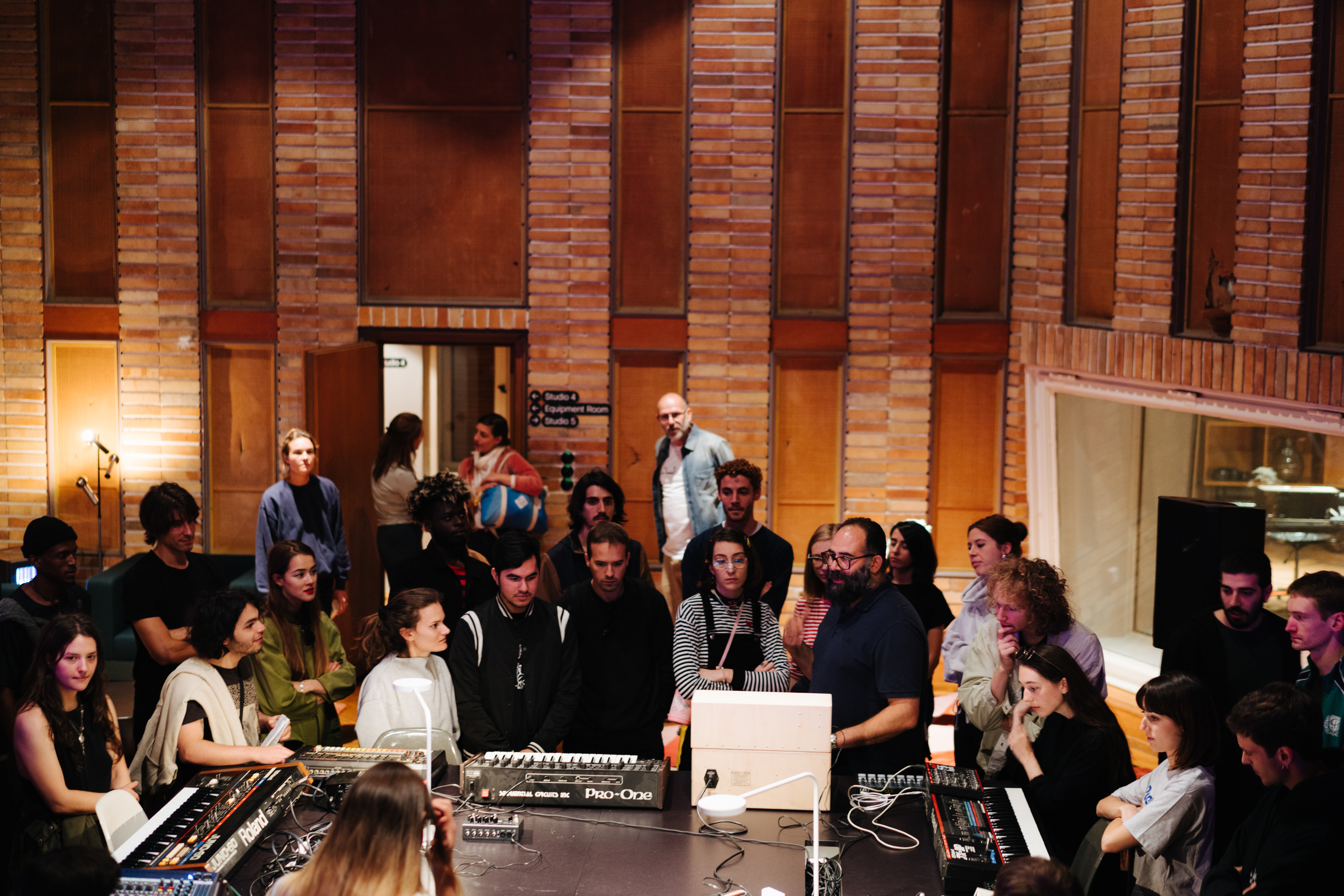Key Tracks: Manuel Göttsching – E2-E4
In his RBMA Berlin 2018 lecture, the German composer and musician reflected on the making of his hour-long electronic masterpiece in 1981

[There were] five, six, seven years between Inventions [For Electric Guitar] and E2-E4, and a lot of things happened in between. The next step after Inventions was that I didn’t want guitar sounds – I always want something new. I do [something] only once and when I’m happy with it, I don’t want to repeat it. I started composing for keyboards and that was my next solo album, New Age of Earth, which gave me a worldwide contract with Virgin Records in England.
At the same time, I started to build more in my studio. I got more equipment. I got more synthesizers. I got sequencers and a Minimoog. I worked again with two musicians under the name Ashra. I recorded two albums, Correlations and Belle Alliance, with these guys. I also recorded another solo album, Blackouts, in ’77. Then I started performing as a soloist with sequencers, synthesizers and keyboard.
A good friend of mine at the time, she was a very well-known figure in the fashion business in Berlin and she made very interesting shows at the time. [They were] very multimedia shows, which was something special that nobody else did, with performance art, with films and, of course, electronic music, [which] was something very new. I started performing live to the shows, improvising for 60, 70, 80 minutes, so I got a good training in this.
This finally led to the recording of E2-E4. I was invited by my old [Ash Ra Tempel] partner Klaus Schulze as a guest on his tour and when I came back, I was a little bit in a live feeling. Some weeks later, I just recorded it, in the same way as I have recorded over the years many, many times, but this time, somehow it was something special and it worked with no technical problems, no crackles.
In fact, I didn’t intend to record a new album. It was just a session and I recorded just on a two-track machine. In the beginning, the rhythm was somehow different from what I tried, so I nearly wanted to stop it, but somehow I said, “No, no. Let’s see what happens.” I’m lucky today. It was very relaxed and maybe this is what it sounds like, but in fact, it was some years’ work to come to this point and some years’ experimental training and performances. It was just a great moment.
I wanted to play and so I did it in the same way I did many sessions in my studio before; I had many recordings of 30 minutes. Sometimes, it’s only ten minutes and something was happening and I stopped it. This one just worked for one hour.
I didn’t change anything afterwards. I didn’t do any overdubs. I didn’t do any edits. I didn’t change anything, not even equalizing or something like that. I just left it as it was. I was a bit surprised, actually, when I finished and then I said, “Oops. What was this?” I listened to it and thought, “This is quite perfect.”
I played it to Richard Branson. He had a new baby in his arm and the baby was falling asleep. He said to me, “You can make a fortune with this record.”
Actually, I was working on a new solo album, but my idea was to make something more orchestral, more composed. Then, suddenly, I had this tape and thought, “What to do?” All my friends said, “You must release it.” Yeah, OK. I went to London. I still had this contract with Virgin Records, but it was open. There was an option to continue or not to continue. Virgin at the time had developed from a very small independent label to a really big company, so I thought they would’ve bought it, but it would have been thrown in a corner and forgotten. Two chords for one hour, for vinyl, what to do with it? I thought it’s not the right thing.
I played it to Richard Branson. I remember when I was seeing him at his houseboat and he had a new baby in his arm. The baby was falling asleep, and he said to me, “You can make a fortune with this record.”
I said, “OK. Thanks for the advice.” I left it for two years and then my old friend Klaus Schulze came up. He want[ed] to create a small label just for some friends and for himself. He called it Inteam Records. He asked me if I would join him or if I had some music, so I said, “OK, why not take [E2-E4], try this?” I thought it’s a small label, so we can see how it works.
There were some strange reactions here in Berlin [when it was released in 1984]. Some people wrote, “There’s no excuse for this record.” I had missed everything in the actual development of electronic music. I should better listen to Depeche Mode, they wrote.
It was not the right time because the high period of the experimental electronic music was over by end of the ’70s, because there was such a huge boom of equipment. There was suddenly a mass market for instruments coming from Japan, especially with the companies Roland, Yamaha, Korg. They all produced synthesizers and keyboards. They got more and more and more. Everyone used it and nobody was talking about [experiments in] electronic music anymore because it became a mass market; it became standard in popular music.
The first of the 1980s, there was a new generation. There was a new wave in Germany with German lyrics. First came punk music, then there was this new wave in England, synth-pop bands in England like Human League, for example. They had chart success and nobody wanted to listen anymore to Tangerine Dream.
It was only [at the] end of the ’80s or beginning of the ’90s, what I call [the] “techno period,” that this music came into the mind of musicians and producers. They remembered, they became again interested and it was played and used and there were concerts again.
In New York, there was a club, Paradise Garage, where Larry Levan played it at full length. I later heard that he even wanted it to be played at his funeral.
It took awhile with E2-E4 in the first years. Nothing spectacular. It was a very slow growing success. In New York, there was a club, Paradise Garage, where Larry Levan played it at full length and [I later heard] that he even wanted it to be played at his funeral. There was, in Detroit, DJs who played it. They sampled or remixed it. I only found it out in 1989, when it came somehow to England. There were several groups of DJs who wanted to make remixes and versions of it. There was this version [by Italo house band] Sueño Latino, and they asked me, they came to Berlin. I was surprised. [The label manager] showed me all these bootlegs and mixes that I didn’t know anything of before.
I couldn’t believe it. I thought, “It’s not produced as dance music, this is not a heavy bass drum.” This is, of course, rhythm and this floating [feeling] and yes, you can maybe [dance to it], but I wouldn’t imagine.
For me, it was just a [reflection of the] state of the time, what was possible. That’s how I played with different analog equipment sequencers. That’s how I used it, how I played it. My minimal influences. When I compose and when I record, I don’t think about how to call it or what might be the audience. Of course, I have my experience, so I know in what direction it could go, but [there] was no intention like that. So of course I just accepted it and I thought, “Yeah, it’s a kind of transition from the so-called classic minimalism from the end of the ’60s until the techno time or, however you may call it, modern electronics.” [E2-E4 is] a kind of bridge in between. That’s what I think.

